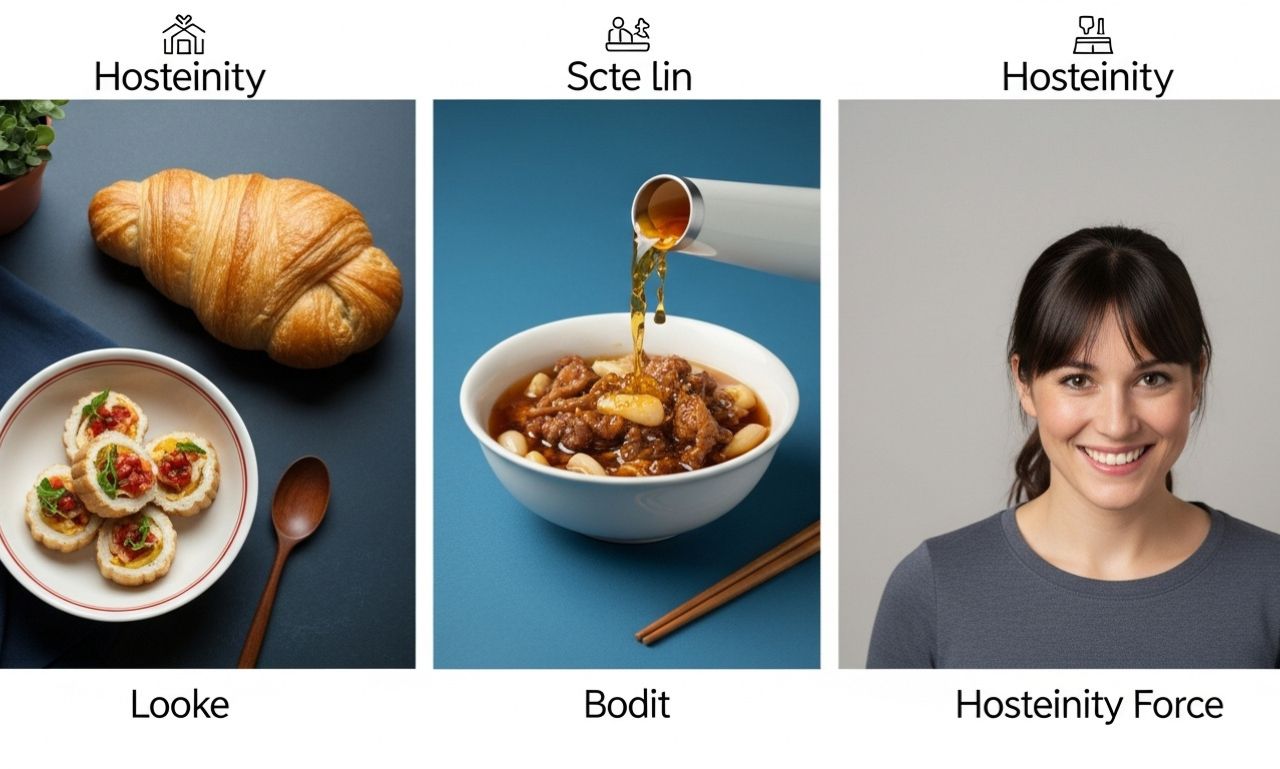“Afruimwagens” are carts or trolleys used in catering, hotels, restaurants, and other service-settings to clear tables, carry trays, transport dirty dishes and cutlery, and help keep hygiene high and workflow smooth. Although simple in concept, a good afruimwagen can make a big difference in efficiency, staff well-being, and customer satisfaction. This article looks at what afruimwagens are, what to consider when choosing one, the types available, benefits, safety & maintenance advice, and trends to watch.
What Are Afruimwagens and Why They Matter
Afruimwagens are mobile clearing carts designed to move used crockery, trays, glasses, and cutlery from dining areas back to kitchens, sculleries, or dishwashing stations. In restaurants and hotels, speed and hygiene are very important. When staff have to make many trips carrying heavy trays, or balancing plates, time is lost and risk of breakage or spills increases. Afruimwagens solve that problem: they allow one trip to clear multiple tables, reduce strain on shoulders and backs, keep dirty items out of sight, and help maintain order and cleanliness.
In hospitality, impression matters. Clean tables and fast clearing create a more polished experience. The right afruimwagen reduces staff fatigue, improves table turnover, and helps the kitchen or dishwashing team receive items in good condition.
Types of Afruimwagens to Suit Different Needs
Different service environments have different needs, so afruimwagens come in various designs. Here are some common types:
-
Open Shelf Afruimwagens: These have two or three open shelves. Good for general clearing, trays, plates, glasses. Easy to load and unload.
-
Enclosed or Semi-Enclosed Afruimwagens: With sides or lids, these hide dirty dishes or food waste from guest view. Handy in upscale restaurants or banquet halls.
-
Heavy-Duty Afruimwagens: Built with stronger frames, often stainless steel, able to carry high loads. Used in large operations, hotels, hospital kitchens.
-
Compact / Slim Afruimwagens: Designed for tight spaces, narrow aisles, coffee shops or small cafés. Smaller footprint but still functional.
-
Multi-Function Afruimwagens: These combine features—tray racks, waste bins, cutlery holders, or compartments. Some include removable bins or bestekbak (cutlery holders) to separate items for sorting.
Materials & Construction Features of Good Afruimwagens
When choosing an afruimwagen, material and build quality make a big difference in durability, hygiene, and usability.
-
Stainless Steel (RVS): Very common in professional settings. Resistant to corrosion, easy to clean, durable. Often used in frames, shelves, casings. For example, RVS afruimwagens are advertised for their hygienic and long-lasting qualities.
-
Plastic Shelves / Compartments: Lightweight, often used in less heavy-duty settings, or where weight-reduction is desired. Easier to move around, sometimes quieter. But may have lower load capacity.
-
Combination of Materials: Some carts have steel frames and plastic shelves or trays, to balance durability and cost. Or for aesthetics, stainless steel edges with plastic compartments.
-
Wheel Design: Smooth-rolling wheels, often swiveling or zwenkwielen, two with brakes for safety, are standard. Wheels must handle weight, frequent movement, possibly uneven floor surfaces (in kitchens, corridors).
-
Load Capacity & Shelf Height: Important to look at how many trays or plates you expect to carry, how heavy they will be, and how tall the shelves are spaced. Too low, bigger items won’t fit; too high, balance and stability might suffer.
-
Ergonomics & Cleaning Ease: Handles that are comfortable, surfaces that are rounded or easy to wipe down, shelves with edges or lips to prevent slipping. Deep plate trays or lip edges help prevent items sliding off.
Benefits of Using Afruimwagens in Hospitality
Investing in good afruimwagens delivers multiple advantages for service operations.
-
Faster Table Clearance & Higher Turnover: Clearing multiple tables in fewer trips saves time. Guests wait less, more covers (meals) per shift.
-
Reduced Staff Strain & Injury Risk: Carrying heavy stacks repeatedly causes fatigue or musculoskeletal injuries. With good carts, weight is distributed and movement is easier.
-
Improved Cleanliness & Guest Experience: Dirty dishes are transported efficiently, less chance of spills or plate stacking in guest zones. Guest satisfaction often improves when service feels smooth.
-
Better Workflow & Kitchen Handoff: Dishes arrive in organized fashion, sorted in bins or trays as needed. Less chaos, less damage, more consistency.
-
Durability & Long-Term Cost Savings: Investing in stainless steel or high-quality materials means fewer repairs, less frequent replacement. Even though cost up front is higher, lifetime cost tends to be lower. Example: models with 200 kg capacity, three shelves, waste or cutlery bins included are more expensive but last many years.
-
Hygiene & Compliance: In food service industries, regulations often require that used dishes be cleared in specific ways. Washing, storing, or handling utensils and trays must meet certain hygiene standards. Afruimwagens help by reducing cross-contamination and making it easier to keep dirty items isolated until cleaning.
How to Choose the Right Afruimwagen
Picking the right cart depends on your specific setting. Here are important criteria to consider:
-
Purpose / Use Case:
If you run a café, lightweight, compact models suffice; in a large hotel or banquet hall, heavy-duty, large capacity carts are needed. -
Capacity & Load:
Estimate how many tables or trays need clearing between kitchen trips. Also consider weight of items. Ensure the cart’s total load rating exceeds that, to avoid overload. -
Size & Mobility:
Will it fit in your space? Hallways, doorways, storage areas. Wheels must move smoothly, possibly handle uneven floors, scrubbing zones. -
Material & Hygiene:
Stainless steel or hygienic plastics are better where sanitation is strict. Smooth surfaces, rounded corners, easy-to-clean design matter. -
Extras & Accessories:
Do you need cutlery holders, waste bins, tray racks, removable trays? These enhance efficiency. Brakes on wheels are helpful, especially when parked or loading heavy shelves. -
Budget & Return on Investment:
Higher quality units cost more, but if durability and less repair are expected, the higher upfront pay-off may be justified.
Maintenance & Safety of Afruimwagens
To get long life and safe operation from afruimwagens, regular care and safe practices are essential.
-
Routine Inspection: Check wheels, frames, joints, any welds or screws. Replace worn wheels, tighten loose fittings.
-
Cleaning Protocols: Clean frequently to remove food residues, grease, moisture. Stainless steel benefits from neutral cleaners; avoid corrosive agents. Dry surfaces to prevent rust.
-
Wheel Maintenance: Lubricate moving parts; ensure brakes work. If wheels are rubber, check for cracks or flat spots.
-
Load Safety: Don’t overload a cart beyond its capacity. Distribute weight evenly across shelves. Avoid sudden jerks or sharp turns while fully loaded.
-
Staff Training: Teach employees how to load/unload safely, how to maneuver carts, how to push rather than pull when possible. Use correct posture.
-
Storage: Store afruimwagens in dry, clean places. Avoid leaving outside if possible. Cover or shelter models to avoid exposure to weather.
Examples & Specifications of Typical Afruimwagens
Here are examples that illustrate what specifications look like in real models, to help you understand trade-offs.
-
A stainless steel (RVS) afruimwagen with 3 levels for used trays or afruimbakken, plus 2 levels for waste bins. Dimensions roughly 440 x 820 x 900 mm high. Common in hotels and large kitchens.
-
A Plastic & steel hybrid afruimwagen with three shelves and top waste container; capacity approx 200 kg. Good for heavy duty service.
-
Slim steel trolley with 3 deep stainless steel trays, with lip edges, sturdy frame, 4 swivel wheels (two with brakes). Useful in banquet service or when moving through narrow paths.
Trends & Innovations in Afruimwagens
Although the concept of afruimwagens has existed for years, new trends now transform the way designers and operators create and use them.
Hygienic Design Focus:
Manufacturers now design carts with antimicrobial surfaces, smooth welds, and fewer crevices to make cleaning easier and improve hygiene standards.
Noise Reduction:
Designers add quieter wheels and rubberized casters that roll smoothly and use materials that reduce rattling and clanking, creating a calmer environment in fine dining spaces and hotels.
Modular & Customisable:
Producers introduce removable compartments and bins that allow staff to separate utensils, plates, and waste efficiently. They also build adjustable shelves to match different service needs.
Eco-Friendly Materials:
Manufacturers use lighter metals, recycled plastics, and sustainable finishes to reduce environmental impact and improve energy efficiency during production.
Safety Enhancements:
Engineers install better brakes, stabilize frames, and add non-slip surfaces and ergonomic handles to improve safety and comfort for staff who make frequent trips.
Potential Drawbacks & How to Mitigate Them
Even good carts have limitations; knowing them helps in planning.
-
Initial Cost: High-quality stainless steel or large carts cost more. Mitigation: weigh long-term benefit in fewer repairs, less breakage.
-
Space Needs: Large carts need storage and clearance room. Mitigation: measure paths and storage areas; choose slim models if space limited.
-
Weight & Maneuverability: Fully loaded carts are heavy; may be hard to steer, especially indoors. Mitigation: good quality wheels, frequent maintenance, staff training.
-
Cleaning & Upkeep Costs: Stainless steel needs special cleaners; parts (wheels, brakes) wear out. Mitigation: schedule maintenance, select durable components, use protective finishes.
Conclusion
Afruimwagens may seem like simple tools, but in hospitality and service settings they are fundamental to smooth operations, staff well being, hygiene. Guest experience, and ultimately, profitability. Choosing the right cart means balancing capacity, material, mobility, hygiene, and cost. Maintaining it well ensures long service life and safety. Innovations in materials and design only increase value.

